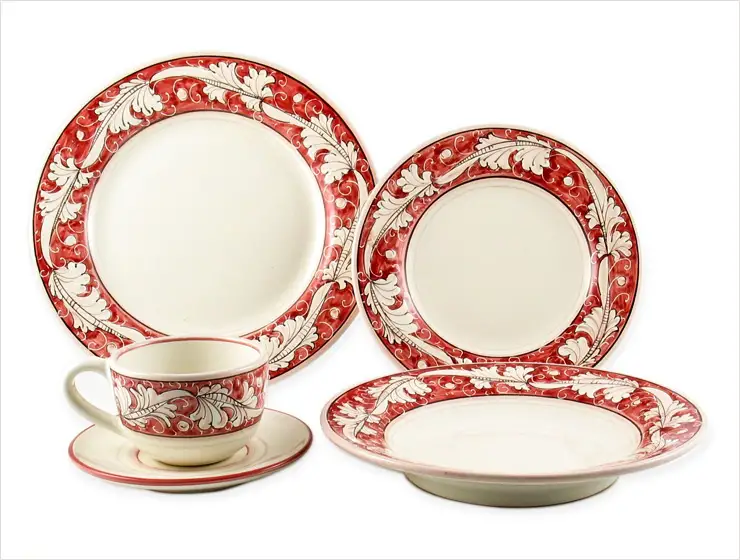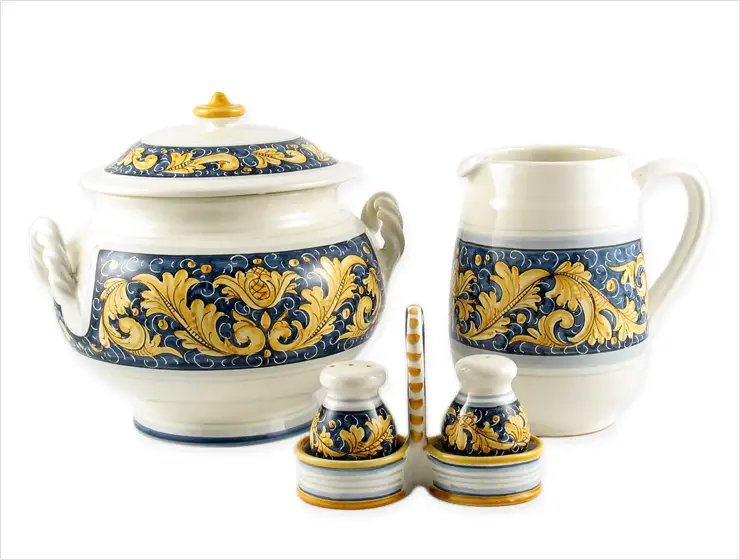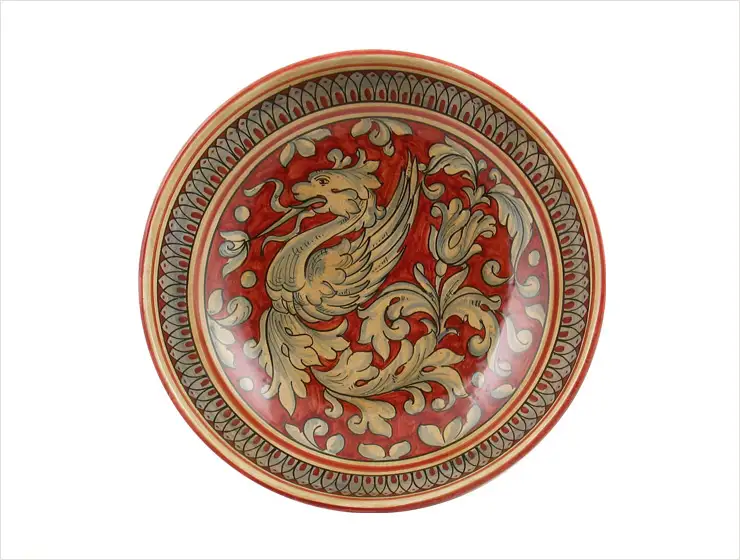GUBBIO
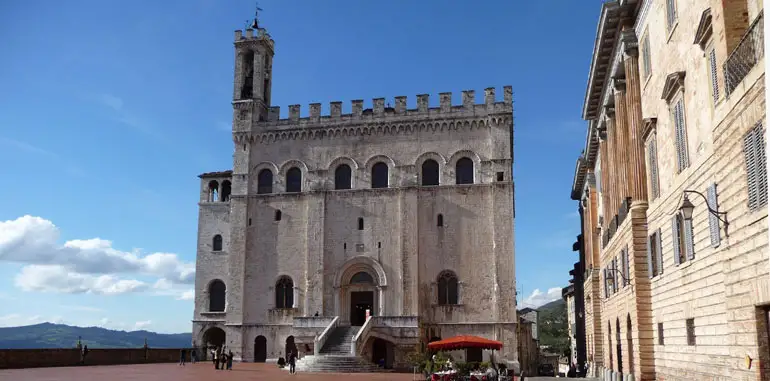
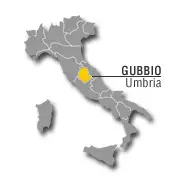 Gubbio is a beautiful town of ancient origins. Its strategic position and the dominance of wealthy and politically important families during the Renaissance greatly contributed to the development of arts and crafts.
Gubbio is a beautiful town of ancient origins. Its strategic position and the dominance of wealthy and politically important families during the Renaissance greatly contributed to the development of arts and crafts.
At that time the fame of Gubbio pottery increased enormously, thanks to Mastro Giorgio’s lustre plates which are among the most relevant pieces of Italian Renaissance art .
Over the centuries Gubbio ceramics have always kept their unique character and a strong attachment to traditional techniques that has granted them a solid group of fans among pottery lovers and collectors.
The city’s origins are very ancient: as Ikuvium, it was an important town of the ancient Umbrian people in pre-Roman times, and is famous for the discovery there of the Eugubine (or Iguvine) Tables, a set of bronze tablets that together constitute the largest surviving text in the ancient Umbrian language.
The city has always had an important political and economic role in the area, as attested by its Roman theater, the second-largest surviving in the world, and the fair number of houses dating to the 14th and 15th centuries which were originally the dwellings of wealthy merchants.
Particularly relevant for the history of Gubbio was the dominance of Dukes of Urbino, who granted the city a long period of peace and set the basis for a strong artistic and civil development. It was under their dominance that the production of good quality majolica started and rapidly grew.
The fame of Gubbio ceramics is mostly due to Mastro Giorgio Andreoli and his brothers, Giovanni e Salimbene.
The three brothers settled in Gubbio in 1498. In their bottega they elaborated a special lustre technique which allowed them to obtain an exquisite golden and red iridescent effect on polychrome figurative majolica. The success was huge and, despite the high prices and the limited production, noblemen and wealthy merchants lined up to own one of Mastro Giorgio masterpieces.
The precious lustre technique was revived by the local artisans in the 19th century. The original recipe was lost and many experiments were carried out to obtain good results, although Mastro Giorgio masterpieces were never equalled.
At the beginning of the 20th century important studies on the Etruscan techniques allowed the production of an old ceramic artwork called “bucchero”. Beautiful, classically shaped pots and urns were created with a special firing method which turns the clay black. The surface of the pieces is shiny and metallic-looking because it is carefully polished before firing.
The Bucchero tradition is still alive in Gubbio, where we saw some beautiful pieces and met a couple of good artisans. Although coming straight from the Etruscan art, they perfectly match contemporary decoration and furniture. A real hit. We’ll soon display some of them in our e.catalogue.
Situated in the very heart of Umbria, the historical centre of Gubbio is a concentrate of Italian art history, from Roman Empire through the Middle Ages and the Renaissance.
If you happen to be in Italy in May, don’t miss its famous palio, the Corsa dei Ceri. It’s a spectacular event held every year on May 15: three teams, devoted to S. Ubaldo (the patron saint of Gubbio), S. Giorgio, and S. Antonio, start from the main square in front of the Palazzo dei Consoli through throngs of cheering supporters (clad in the distinctive colours of yellow, blue and black, with white trousers and red belts and neckbands), and never stopping their run they climb the mountain to reach the basilica of S. Ubaldo. Each team carries a statue of one of the three saints that is mounted on a 4-meter tall wooden octagonal prism, similar to an hour-glass shape weighing about 280 kilograms.
A celebration like the Corsa dei Ceri is held also in Jessup, Pennsylvania.
The race celebrates Gubbio, its heritage and deeply rooted traditions. It’s not surprising then that its symbol is a ceramic pitcher, the Brocca dei Ceri. At the beginning of the Corsa, the team captains, the Capodieci, climb atop the cross-members of the Ceri holding the Brocche. They swing them, then throw them in the middle of the crowd. As soon as the Brocche smash, people rush over to pick up a ceramic shard, as it is good luck for the entire year!
We do not feature the Brocche at thatsArte.com, but we’ll be happy to have your Saint’s Brocca hand made for you by Ceramiche Rampini, one of the ceramicist who have been paid the honor to make the Brocche for the Corsa dei Ceri in Gubbio.
For information about sizes and prices contact us
Our Free Personalization on Handmade Italian Pottery at thatsArte.com service also applies to the Brocche, as well as our Handmade Bespoke Italian Pottery and Table Linens at thatsArte.com policy.
